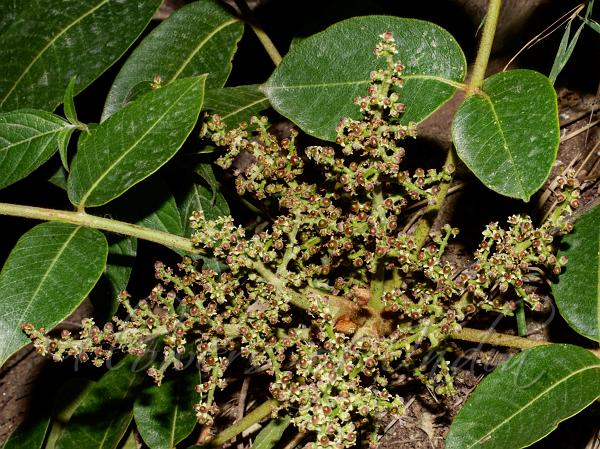|
| Himalayan Poison Oak |
|

|

|
|
|
|
Photo: |
Botanical name: Toxicodendron wallichii Family: Anacardiaceae (Cashew family)
Synonyms: Rhus wallichii
Synonyms: Rhus wallichii
Himalayan Poison Oak is a tree up to 15 m. Branches are
sparse, robust, coated in rusty velvet-hairs, ridged, with prominent
leaf scars. Young stems and immature leaves are densely woolly. Leaves
are 20-60 cm long, imparipinnate, leaflets 7-15, ovate-oblong, 2.7-24 x
0.4-1.8 cm, upper surface dark green, lower surface pale green and with
rusty tomentum, margins entire, tip tapering; axis woolly, without
wings; leaf-stalk distinct, 8-20 cm long. Flowers are borne in
leaf-axils or in branch-end panicle, densely woolly, much shorter than
the leaves. Flowers are insignificant, dirty white. Fruit a spherical
drupe, 5-7 mm long, rusty, woolly. Himalayan Poison Oak is found in
the Himalayas, from Garhwal to Bhutan, in Mountain
forests, at altitudes of 1950-2800 m. Flowering: May-November.
Medicinal uses: The juice of the leaves is a
corrosive agent that causes blistering.
The juice of the leaves is a
corrosive agent that causes blistering.
Medicinal uses:
 The juice of the leaves is a
corrosive agent that causes blistering.
The juice of the leaves is a
corrosive agent that causes blistering. | Identification credit: Ashutosh Sharma | Photographed in Kullu District, Himachal Pradesh. |
• Is this flower misidentified? If yes,